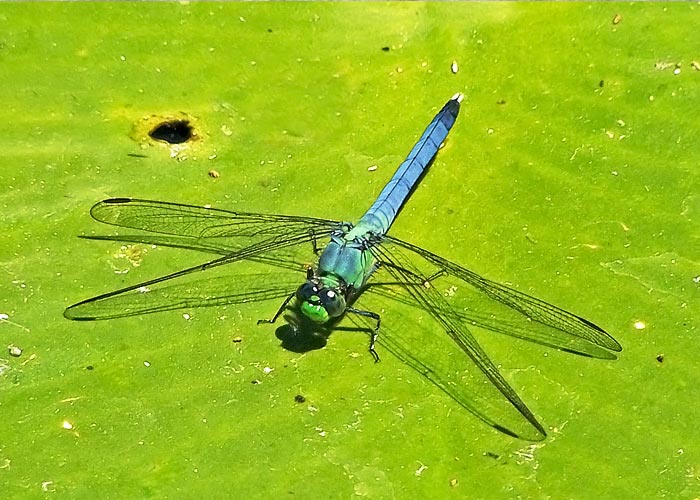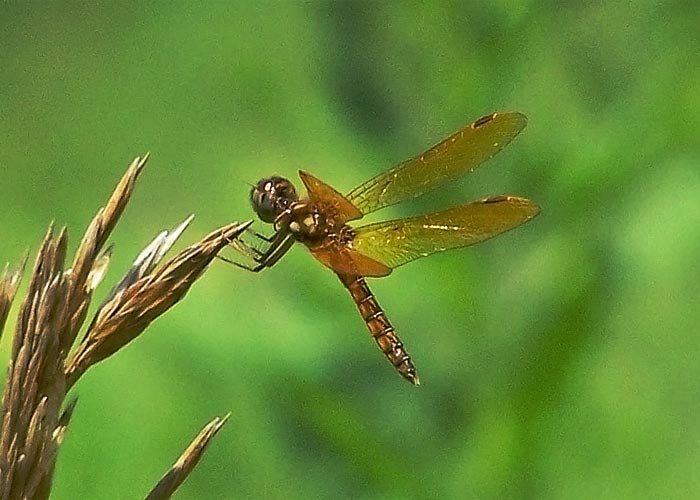Greetings, BugFans,
Dragonflies (damselflies, too) belong in the order Odonata which, according to Kurt Mead in Dragonflies of the North Woods means toothed ones, a reference to their lower lips. Dragonflies are in the suborder Anisoptera (different wings) because their larger hindwings are shaped differently than their forewings. The three dragonflies included here are all in the Skimmer family, Libellulidae. Despite the fact that the young are aquatic and the adults are not, and the young (naiads) look different than the adults, they are considered to have simple or incomplete metamorphosis.
Dragonflies are meat eaters throughout their lives; the adults often hunt from sentinel posts that they return to repeatedly, making it easier to study/photograph them. They have classy, wrap-around compound eyes that detect movement (both by their prey and by their would-be photographers). Compound eyes are made up of a whole bunch of wedge-shaped, functional, simple eyes, each with its own optic nerve. Each eye views a slice of life at a slightly different angle than the one next to it.
Eastern/Common Pondhawks
Eastern/Common pondhawks are found along the banks of lakes, ponds and slow streams. In his Common Dragonflies of Wisconsin Legler says about eastern pondhawks: “our most ferocious dragonfly: attacks insects their own size, occasionally cannibalistic.” Their flight period is primarily in June and July.
A few years ago the BugLady, accompanied by her own personal swarm of deerflies were photographing a lovely green female pondhawk. Just as she was about to snap the shutter, the pondhawk jumped off her perch, flew around the back of the BugLady’s neck and grabbed a deer fly that was bugging the BugLady (a little entomologists’ humor, there) and carried it back to the perch again, where she was photographed dining al fresco.
Eastern Amberwing
The Eastern Amberwing is a tiny gem, fast-flying and jumpy, that patrols the edges of ponds in mid-summer.
Chalk-fronted Corporals
Chalk-fronted corporals emerge by the gazillion in late spring; clouds of Corporals swarm low over the warm roadways hunting for other insects that are attracted by the heat.
[metaslider id=6919]
Three hundred (300) million years ago some dragonflies had three foot wingspans. The BugLady wonders what they preyed on then.
Old-Wives Tales to the contrary, dragonflies don’t have the time or the equipment or the inclination to bite you or sting you or to sew your lips shut.
The BugLady

